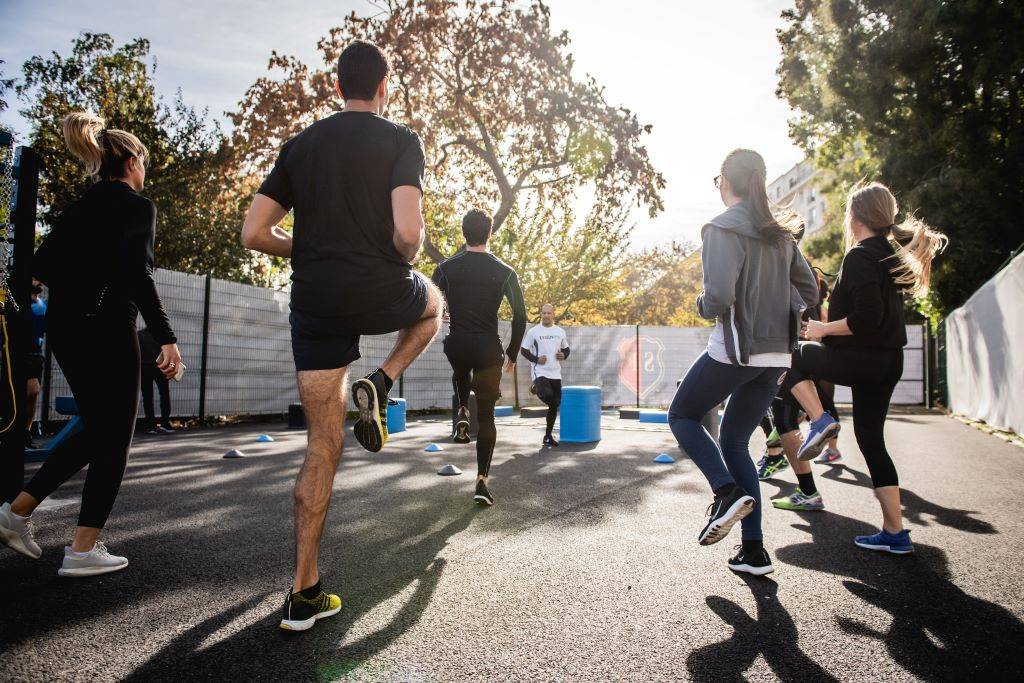Incorporating exercise into your daily routine is critical for your general health and well-being. To make it a reality, establish specific health objectives that motivate you. Begin slowly and progressively to increase the amount of time and degree of difficulty of your workouts. Allocate time for exercise and prioritize it in your daily routine. Choose activities you appreciate to make the encounter more enjoyable and long-lasting (Marcell, 2011). Maintain variety in your workouts to prevent boredom and engage different muscle areas. Find activities that fit into your schedule and are convenient for you. Consider exercising with someone you know or joining a fitness group for responsibility and social connection. Set reasonable goals and appreciate tiny triumphs along the way. Keep track of your actions to see where you've come from.
Practical tips:
1.Set clear fitness goals: Define your fitness objectives and be specific regarding what you want to obtain. Setting precise goals, whether for cardiovascular health, strength, or weight loss, may assist you in staying inspired and committed. Example - Aim to complete 800 steps per day or be able to do 15 push-ups without stopping.
2.Start small: To avoid becoming overwhelmed:
●Start with tiny, manageable measures.
●Begin with brief workouts and gradually increase the duration and effort over time.
●Begin with a ten-minute stroll and progressively increase it to thirty minutes or more. Example - Begin with a 10-minute walk.
3.Schedule time: Integrate your workout with something you regularly do, for instance, walking the pet, grocery shopping, or doing the dishes—schedule time in your calendar for physical activities. Aim for at least one hundred fifty minutes of moderate-intensity or 75 minutes of intense physical activity weekly.
Example - Block off 5:00 PM to 6:00 PM every day for exercise.
4.Choose activities: Discover activities that you truly adore. Choosing activities you enjoy, whether it's movement, biking, swimming, performing a sport, or walking, can make it simpler to persist with them in the long haul (Menhas, 2021).
Example - Play a sport like football or go for a walk in a park.
5.Keep your workouts varied: Variety is essential for keeping your physical activity interesting and avoiding monotony. Incorporate a variety of cardiovascular, strength, and flexibility workouts into your routine. To keep things interesting, try new fitness types or join group courses.
One example is combining aerobic exercises such as cycling, jogging, and diving with strength training exercises such as lifting or bodyweight exercises.
6.Choose activities that fit into your lifestyle: Choose exercises that are convenient for you and fit into your schedule. If you lack the time for a full workout, divide it into small sessions throughout your day. Find ways to get moving, such as using the stairs rather than the lift or going for a stroll during your lunch break.
7.Social interaction: Finding a workout buddy or organizing a fitness group can improve the experience and provide accountability. You may encourage one another, offer advice, and make exercise a social activity.
8.Have realistic expectations: Be calm with yourself and stop seeking instant gratification. It takes time to make progress, and continuity is more vital than perfection. To keep motivated, celebrate tiny accomplishments along the road. For instance, aim to increase your workout duration by 5 minutes every week instead of expecting immediate results.
9.Track your progress: Maintain a log of your physical activity and improvement. It might be as basic as keeping a log of your workouts or utilizing fitness tracking software. Tracking your development can show you how far you have come and give you a sense of success.
Use a stopwatch: During your workouts, use a stopwatch to time how long it takes to finish a given exercise or activity. It allows you to track your progress and establish goals for growth. For example, you can time how long it takes to run a specific distance and reduce that time with each workout. A stopwatch can be an effective tool for tracking your progress while pushing yourself to break prior records.
10.Prioritize rest: Allow enough time for your organs to rest and heal between workouts. Include leisure days in your calendar and heed your body's warning signals. Rest and rehabilitation are critical for preventing injury and keeping up with long-term exercise routines (Dhanaraj, 1974). Before beginning any new fitness program, constantly speak with a healthcare practitioner, particularly ifhuangjing you have any existing ailments or concerns. They can give you personalized counsel, depending on your specific situation.
By summing up:
There are various things to consider when exercising at home. To begin, set up a distinct training area in your home, whether a space, a corner in your living room, or a cleared-out area in your bedroom. Having an established spot aids in developing a training attitude and renders it simpler to concentrate on your workouts (Anderson, 1994). Next, look into workouts that can be done without any equipment, such as squat lunges, squats, planks, and burpees. These workouts are great for strong growth and can be performed anywhere. Get inventive with your training program and include everyday things. Water bottles can be used as weights, a strong chair can be used for step-ups or tricep dips, and paper towels can be used for resistance workouts. By following these tips one can stay healthy and active.
WRITTEN BY VIBEAT
Related Blogs
Recommended Products





